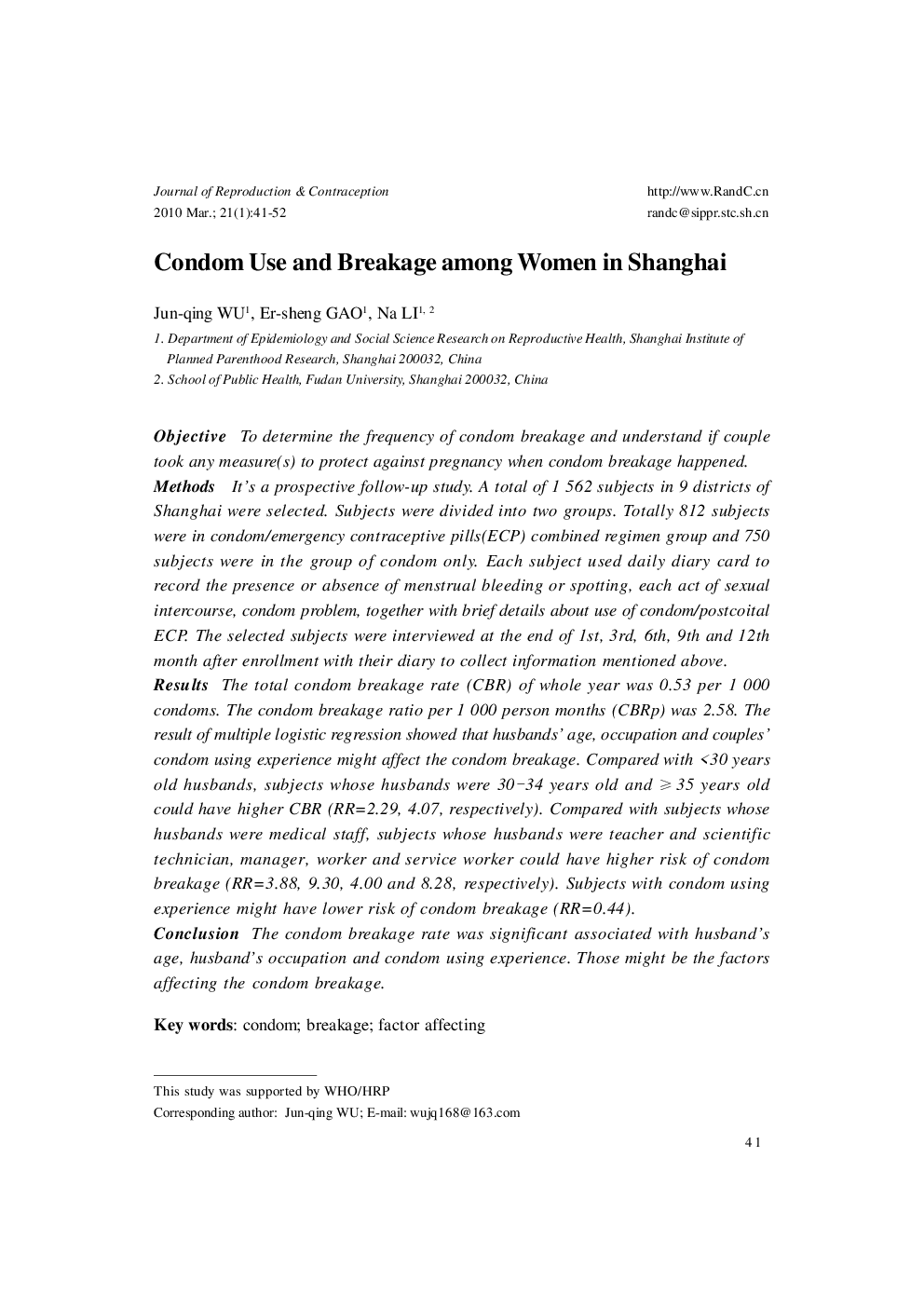| Article ID | Journal | Published Year | Pages | File Type |
|---|---|---|---|---|
| 3963593 | Journal of Reproduction and Contraception | 2010 | 12 Pages |
ObjectiveTo determine the frequency of condom breakage and understand if couple took any measure(s) to protect against pregnancy when condom breakage happened.MethodsIt's a prospective follow-up study. A total of 1 562 subjects in 9 districts of Shanghai were selected. Subjects were divided into two groups. Totally 812 subjects were in condom/emergency contraceptive pills(ECP) combined regimen group and 750 subjects were in the group of condom only. Each subject used daily diary card to record the presence or absence of menstrual bleeding or spotting, each act of sexual intercourse, condom problem, together with brief details about use of condom/postcoital ECP. The selected subjects were interviewed at the end of 1st, 3rd, 6th, 9th and 12th month after enrollment with their diary to collect information mentioned above.ResultsThe total condom breakage rate (CBR) of whole year was 0.53 per 1 000 condoms. The condom breakage ratio per 1 000 person months (CBRp) was 2.58. The result of multiple logistic regression showed that husbands' age, occupation and couples' condom using experience might affect the condom breakage. Compared with <30 years old husbands, subjects whose husbands were 30-34 years old and ≥35 years old could have higher CBR (RR=2.29, 4.07, respectively). Compared with subjects whose husbands were medical staff, subjects whose husbands were teacher and scientific technician, manager, worker and service worker could have higher risk of condom breakage (RR=3.88, 9.30, 4.00 and 8.28, respectively). Subjects with condom using experience might have lower risk of condom breakage (RR=0.44).ConclusionThe condom breakage rate was significant associated with husband's age, husband's occupation and condom using experience. Those might be the factors affecting the condom breakage.
